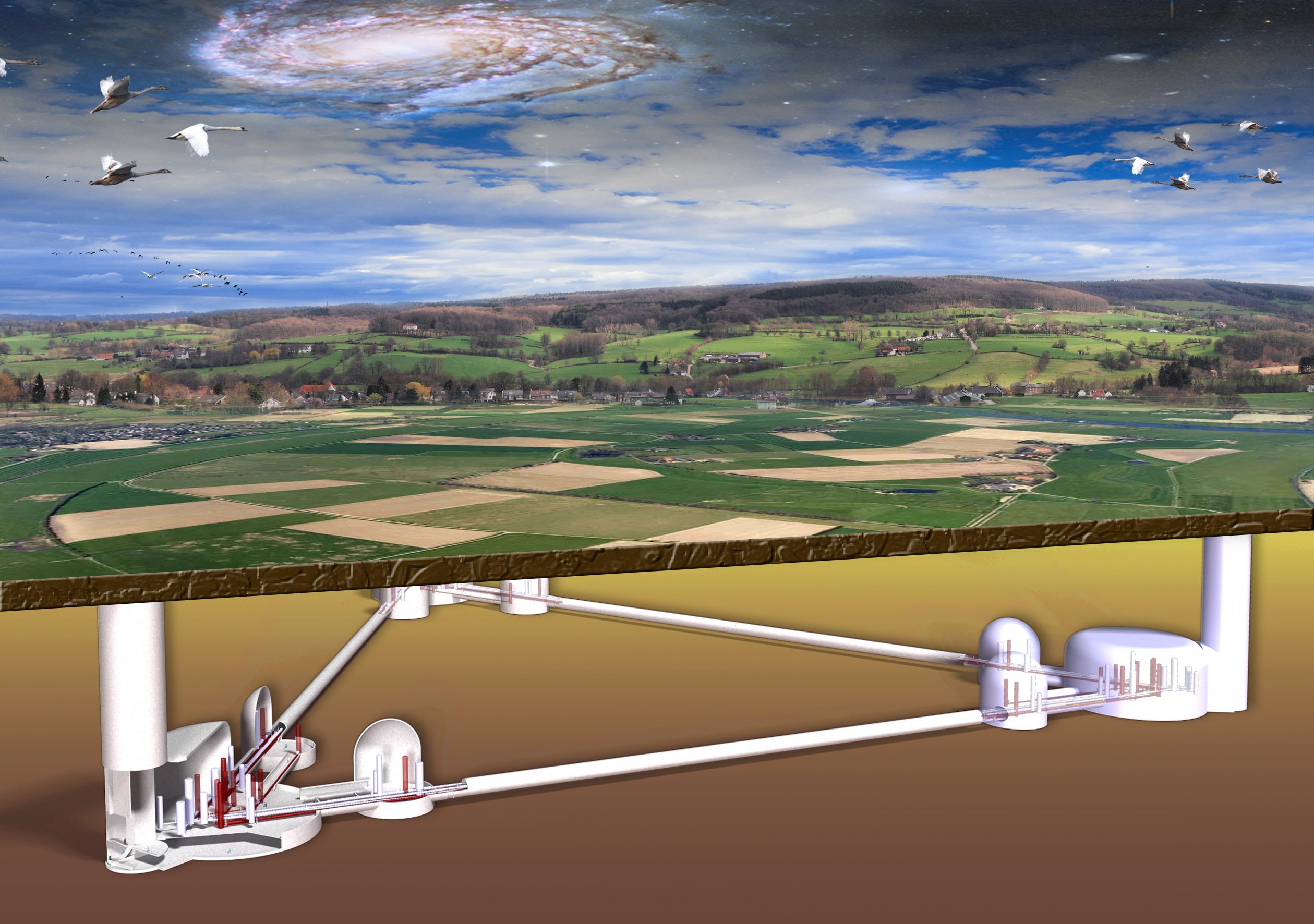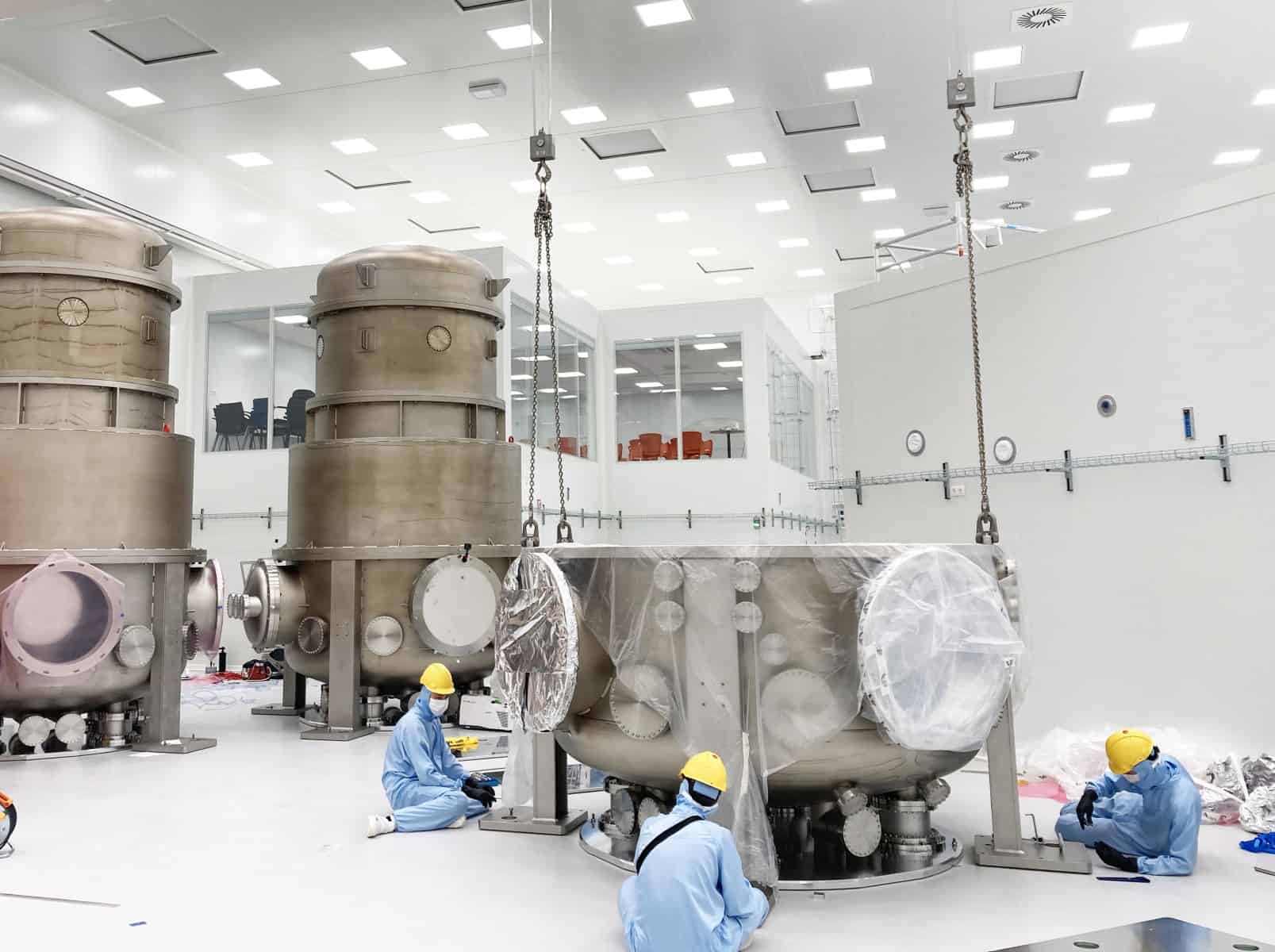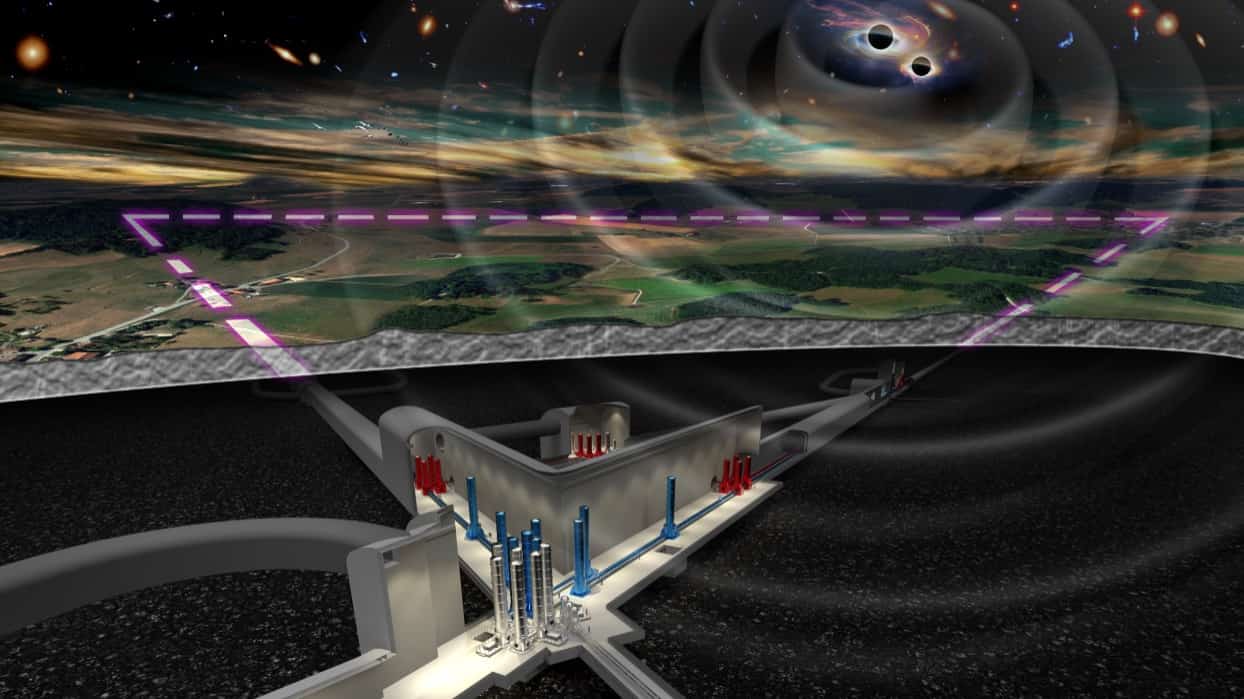
The Einstein Telescope (ET) is a groundbreaking future gravitational waves observatory. ET aims to significantly surpass current detectors, capable of detecting up to one million events per year. The final decision on where it will be constructed is expected by 2026.
- The ET will provide revolutionary insights into black holes, neutron stars, supernovae, and the Big Bang, challenging our understanding of the universe.
- It will be a multi-detector observatory consisting of three nested detectors with arms 10 kilometers long. These detectors can detect both low and high-frequency gravitational wave signals.
- Two design options are being considered for the ET: a triangle layout or two L-shaped telescopes.
The ET will provide revolutionary insights into black holes, neutron stars, supernovae, and the Big Bang, challenging our understanding of the universe. The Netherlands has allocated €42 million from the National Growth Fund for the ET’s construction, with an additional €870 million for Dutch involvement. The total cost is estimated at €2 billion, and construction is expected to take 10-15 years. This ambitious project fosters international collaboration and aims to attract young talent in the quest to unravel the universe’s mysteries.
Unearthing the unknown: the technological marvel
The Einstein Telescope, or ET, is no ordinary telescope. It is an advanced gravitational-wave observatory, predicted to be at least ten times more accurate than current detectors. Unlike traditional telescopes, the ET will be 200 to 300 meters underground, thus minimizing noise and vibrations and allowing for continuous universe observations. To detect gravitational waves, the ET will measure tiny changes in the length of these underground detector tunnels using laser beams. The observatory’s design sensitivity is remarkable, detecting differences in distance ten thousand times smaller than the size of protons in an atomic nucleus.
Gravitational waves, which can pass through the Earth, will be detected using laser beams bouncing back and forth between exact mirrors in vacuum tubes. Ultra-precise light sensors will record the minute changes in length caused by passing gravitational waves. To observe these waves, the telescope will measure tiny changes in the length of detector tunnels 200-300 meters underground and several kilometers long.

Envisioning the unseen: the science behind the ET
The ET is based on Einstein’s general theory of relativity, which predicts that vibrating masses disrupt the structure of spacetime. For instance, the merger of two black holes converts their mass into gravitational waves. The telescope’s extraordinary sensitivity is compared to the rise of the water level in a lake caused by a single raindrop, surpassing the precision of even the best machines used in computer chip manufacturing.
Additionally, the ET will be a multi-detector observatory consisting of three nested detectors with arms 10 kilometers long. These detectors can detect both low and high-frequency gravitational wave signals. This configuration allows the observatory to evolve and adapt to future developments in interferometry and address various scientific objectives.

Deciphering the design: triangle vs double L
Two design options are being considered for the ET: a triangle layout or two L-shaped telescopes – comparable to the already existing telescopes. The triangle design is more innovative but carries a higher risk as it’s a layout that has never been attempted. Conversely, splitting the project into two L-shaped telescopes could potentially gather more data and evidence, although it also presents challenges. The chosen sites must meet certain criteria, including stable ground, low seismic activity, and low groundwater presence.
The Euregio Meuse-Rhine region – where the Netherlands, Belgium, and Germany meet – and the decommissioned mine of Sos Enattos in Sardinia, Italy, are being considered potential sites to build the telescope. Italy has already submitted its official bid to host the telescope.

Collaboration for creation: the international effort
Several entities are contributing to the ET project. One of them is the Albert Einstein Institute (AEI) in Hannover, Germany, a leading institution in gravitational-wave research. The ET research at AEI Hannover focuses on quantum-limited interferometric measurements, laser development, and the control and operation of gravitational-wave detectors.
Each institution involved in the project has a specific role. Scientists, companies, and governments from all three countries are exploring the possibilities of establishing the telescope in the region. Several Italian institutions are working on researching the site, too.
Beyond the Cosmos: societal and technological impact
While the ET’s primary objective is to advance scientific knowledge, the project also has significant societal and technological implications. The project presents a challenge for high-tech companies, drives technological progress, and provides opportunities for wider society. The ET is expected to attract young talent and serve as a top research facility for at least 50 years.
The construction of the ET will also have economic spillovers for the region that hosts it. The telescope will provide employment opportunities and foster the development of new technologies.

